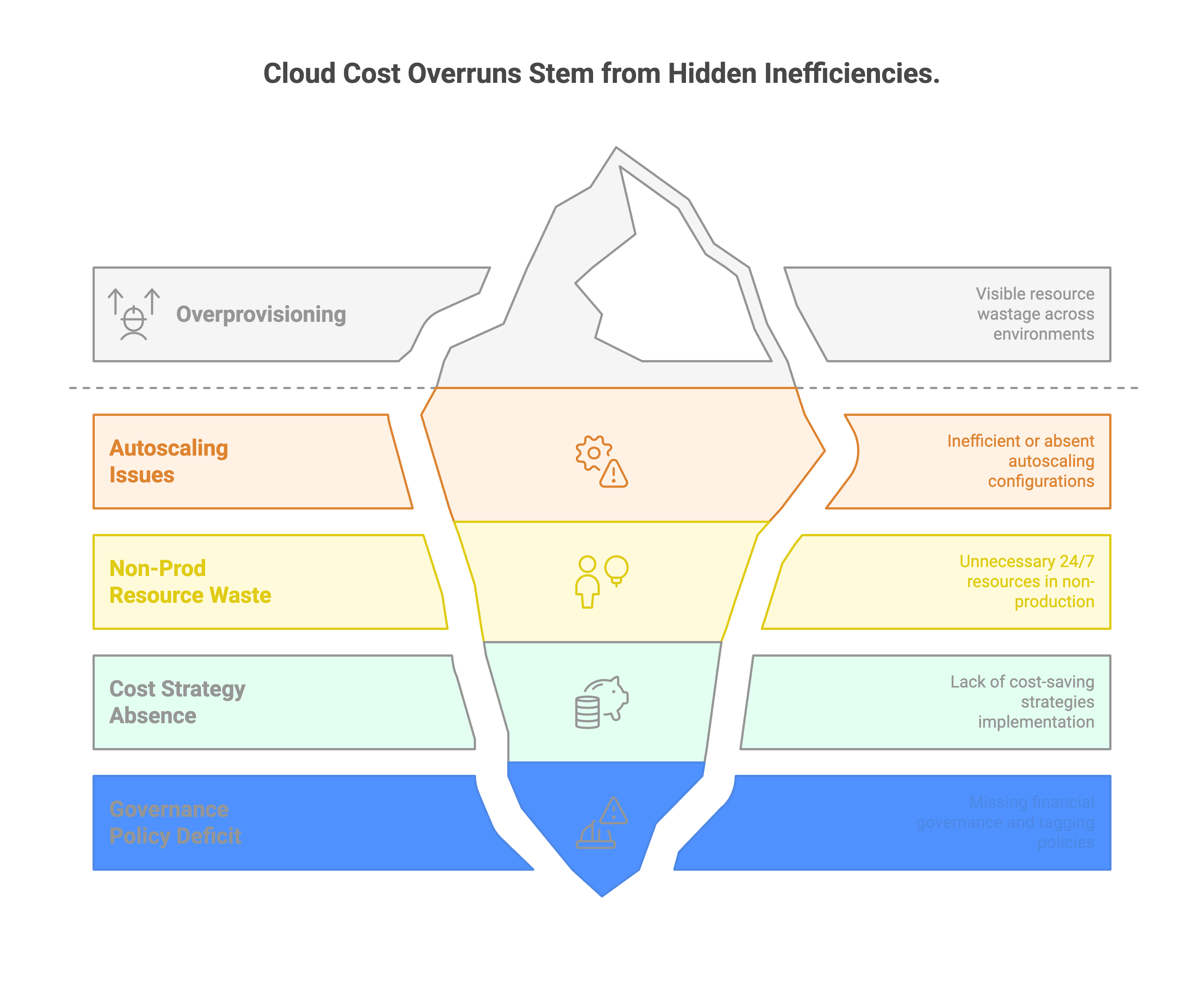The Context: Critical Technological Dependencies
The client company operates a national logistics platform that coordinates transport fleets in real time. Their operations depend on four critical technological pillars that cannot fail:
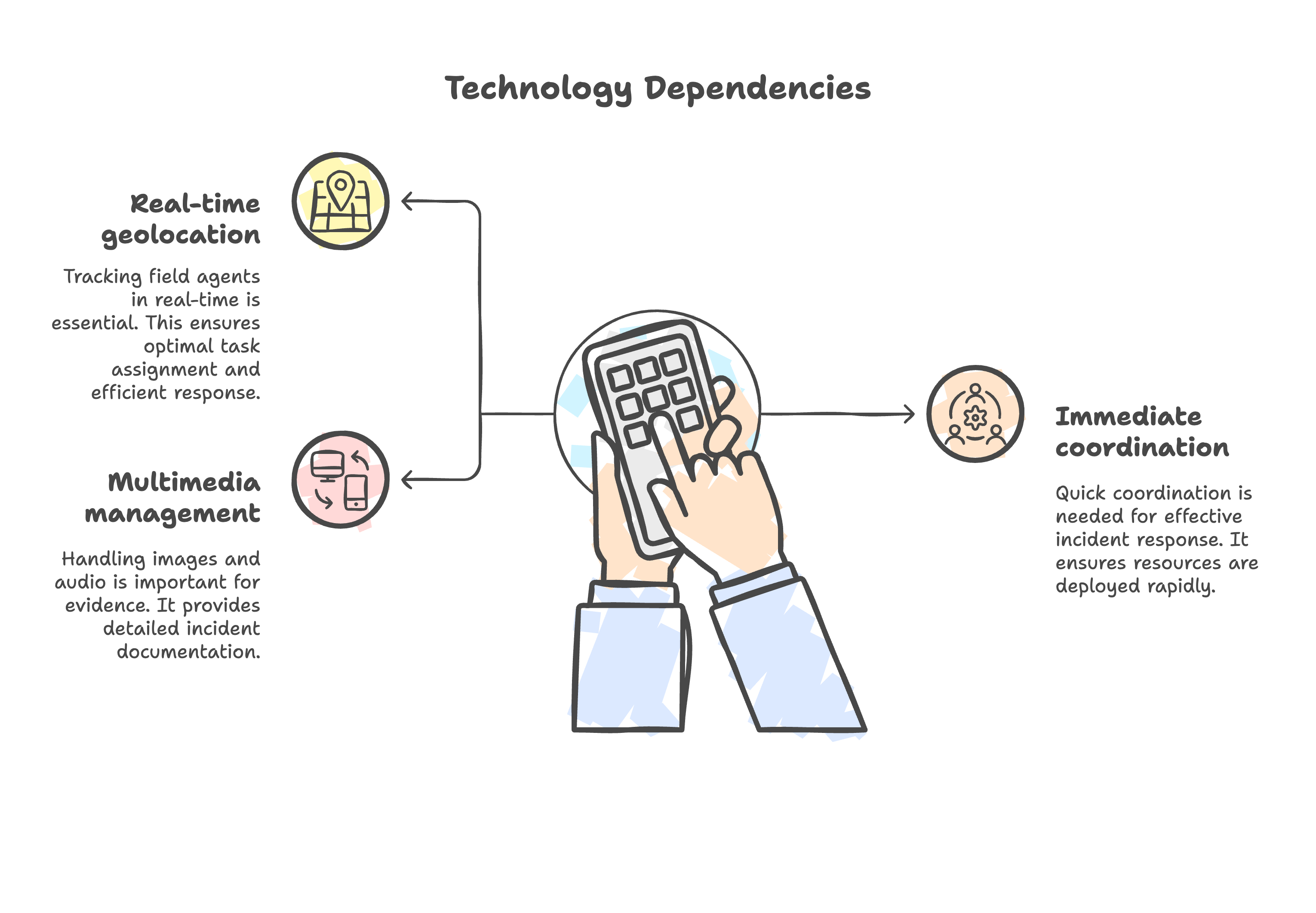
Critical technological dependencies of the logistics platform
- Real-time geolocation: Field agent tracking with 30-second updates
- Multimedia management: Handling delivery images and quality audio files
- Immediate coordination: Incident response system with sub-minute response
- Demand scalability: Managing traffic spikes during peak seasons
The Main Challenge
Any interruption in these services meant immediate losses in field operations, delivery delays and deterioration of the end customer experience.
Anatomy of the Problem: $20K Monthly without Control
Initial Architecture on AWS
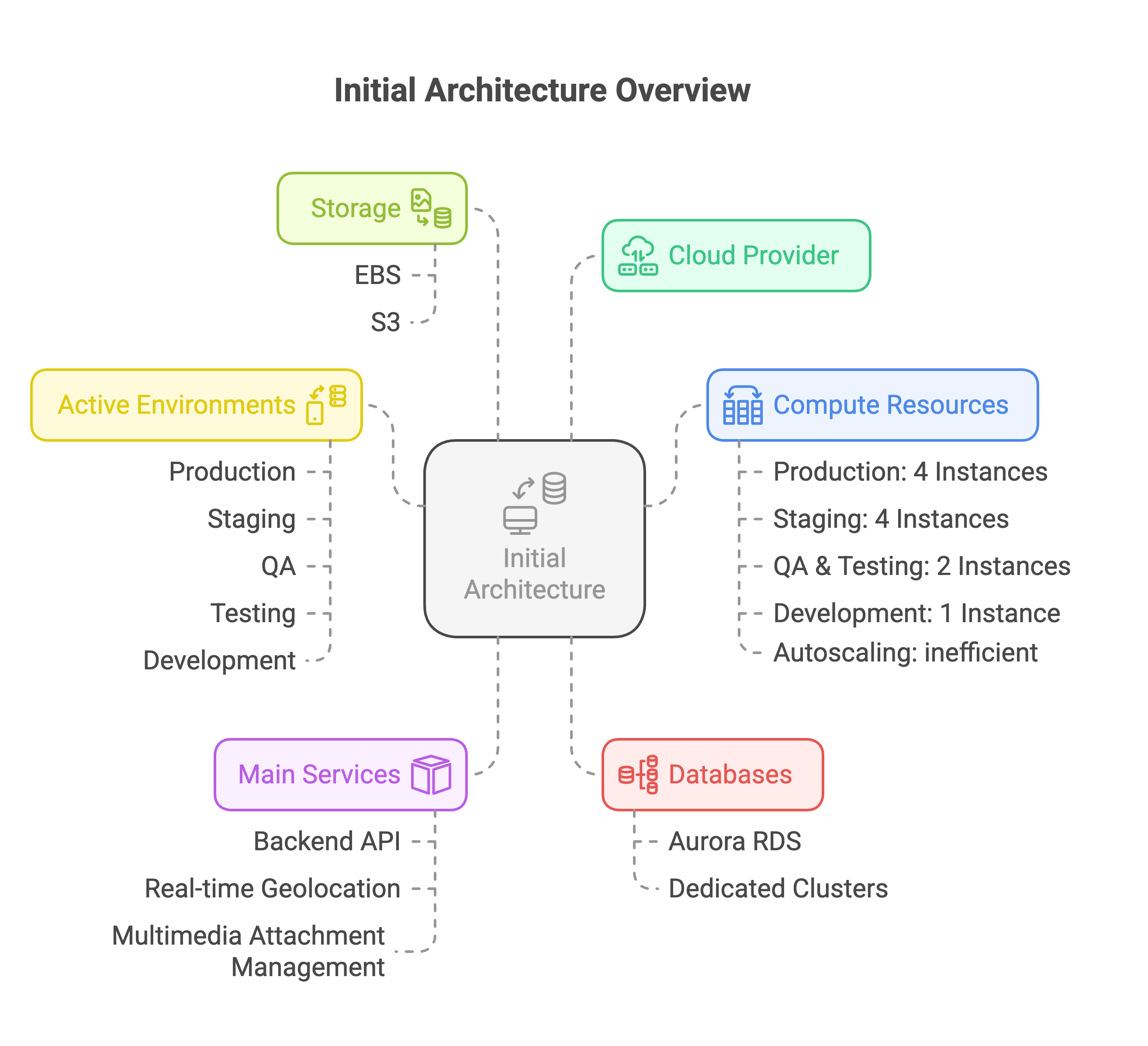
Initial architecture: oversized and without cost optimization
The initial architecture presented all the classic symptoms of uncontrolled cloud growth:
- 13 EC2 instances distributed across 5 environments (Production, Staging, QA, Testing, Development)
- Inefficient autoscaling with default configurations
- Independent RDS clusters per environment without optimization
- S3 and EBS storage without lifecycle policies
- Total absence of Reserved Instances or Savings Plans
Monthly Spending Distribution
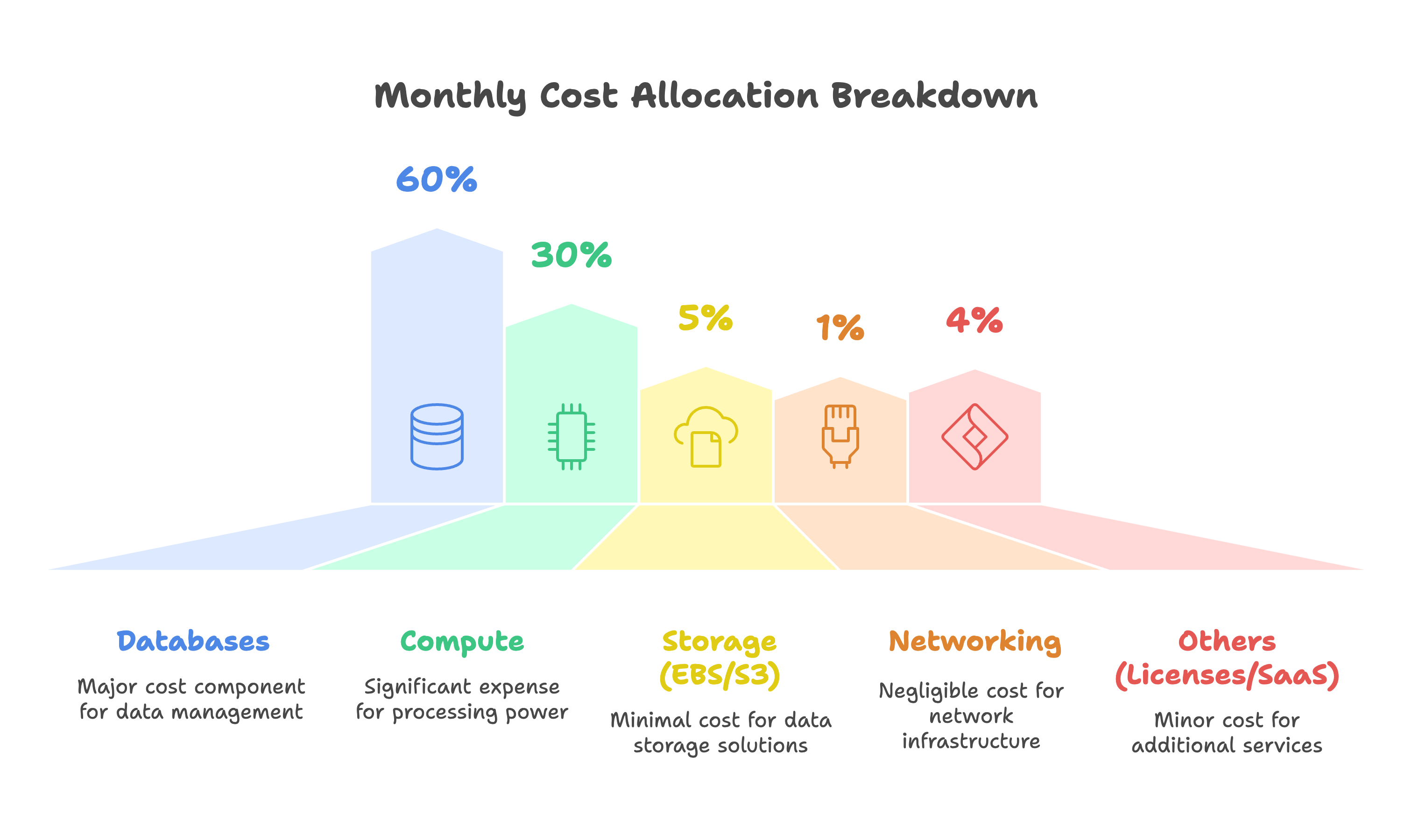
Initial monthly spending distribution: databases represented 60% of cost
Our FinOps Strategy: The Optimization Funnel
We applied our K4i methodology specifically adapted for FinOps, creating a progressive optimization funnel that guaranteed measurable results without compromising operation.
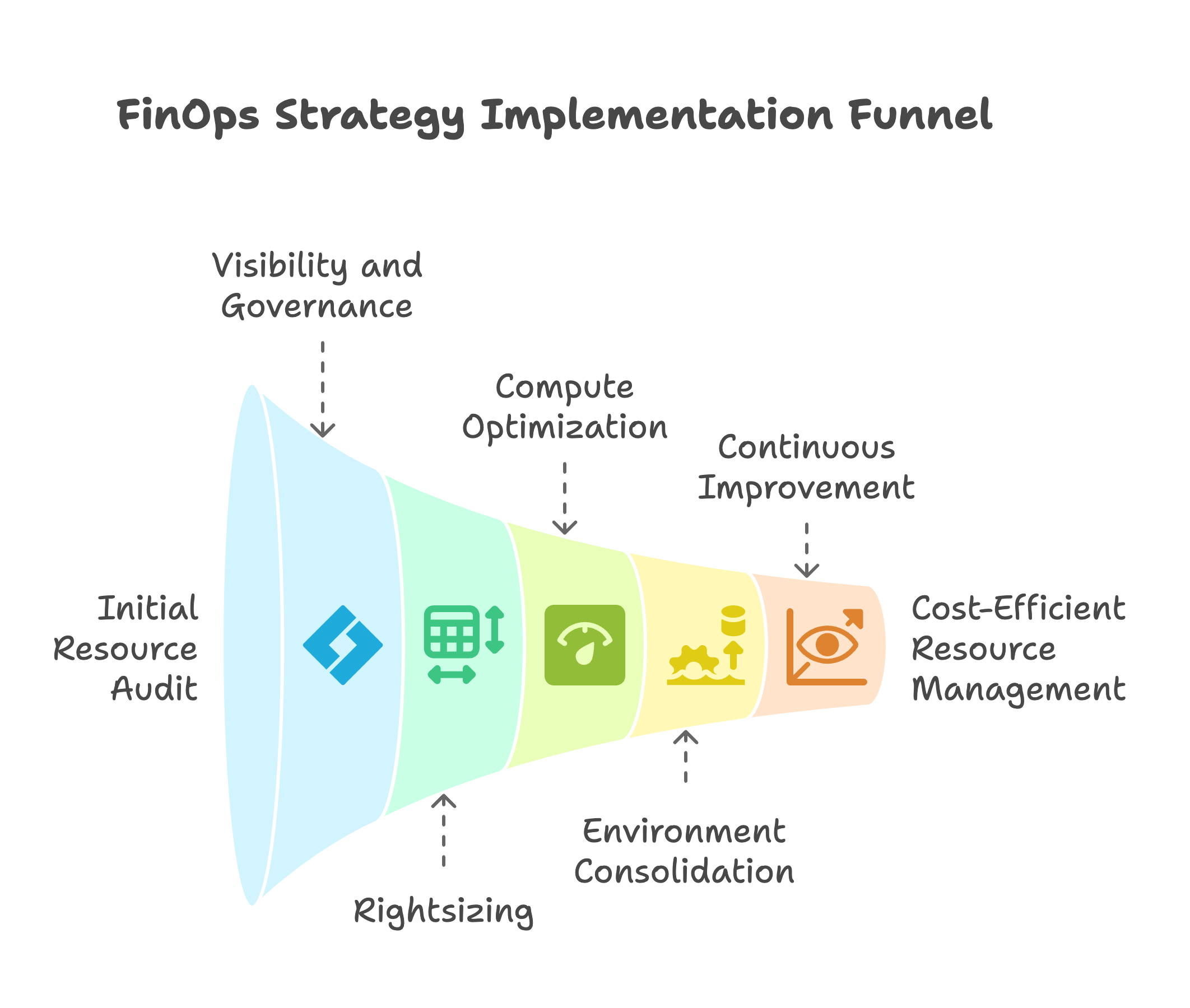
FinOps optimization funnel: from visibility to improved cost efficiency
Implementation Phases
Resource Visibility
Implementation of complete tagging and real-time monitoring dashboards.
Rightsizing
Optimization of instance types and sizes based on historical metrics.
Environment Consolidation
Reorganization and automation of non-productive environments.
Compute Optimization
Strategic implementation of Reserved Instances and Spot Instances.
Continuous Improvement
Policy automation and continuous efficiency monitoring.
Results: From $20K to $8K with Improved Operations
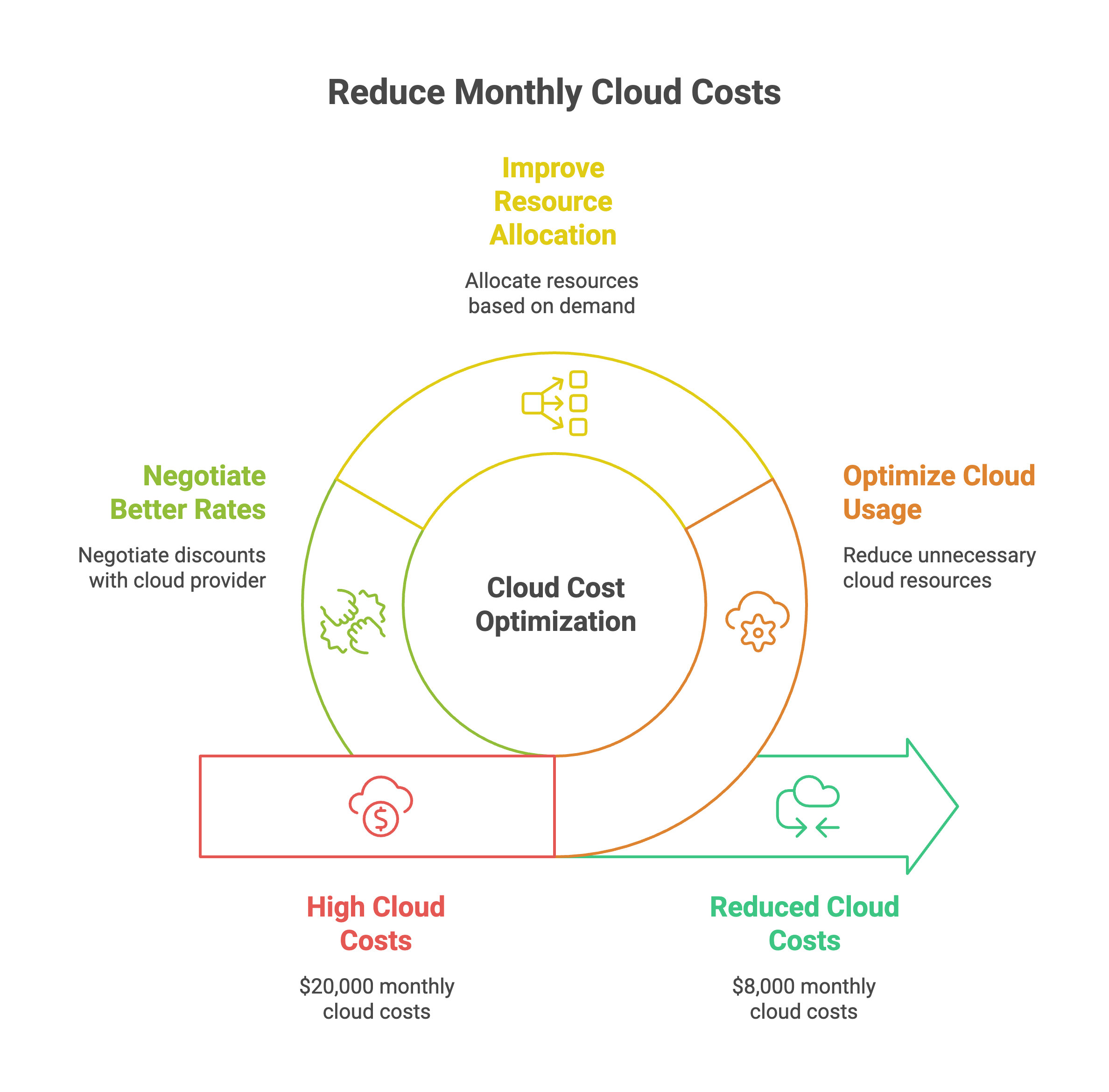
Virtuous circle: cost reduction with operational improvement
Quantitative Results
| Metric | Before | After | Improvement |
|---|---|---|---|
| AWS Monthly Cost | $20,000 | $8,000 | 60% ↓ |
| Annual Savings | $0 | $240,000 | +$240K |
| EC2 Instances | 13 | 8 | 38% ↓ |
| Response Time | 150ms | 120ms | 20% ↑ |
| Service Uptime | 99.5% | 99.9% | 0.4% ↑ |
Qualitative Results
- Organizational alignment: Finance, IT and Operations working with shared metrics
- Faster deployment times: 40% reduction in provisioning time
- Complete visibility: Real-time dashboards for decision making
- FinOps culture: Technical team aware of financial impact of decisions
"In 6 months we not only saved $240K annually, but improved performance and gained total visibility over our infrastructure. The h14z team understood that maintaining our critical services was non-negotiable."— CTO, Logistics Platform
Lessons Learned: 3 Pillars of Successful FinOps
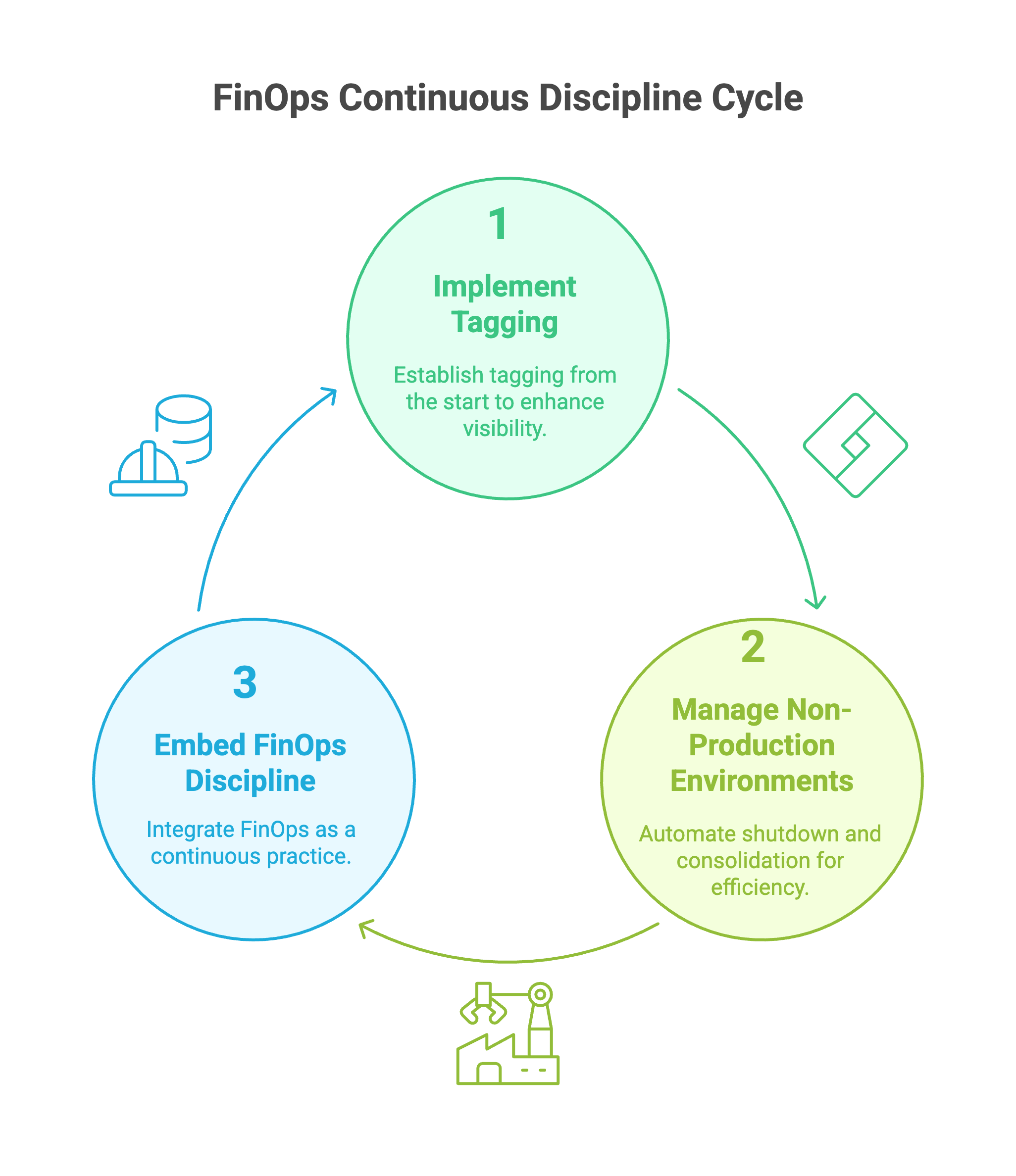
The 3 fundamental pillars for successful and sustainable FinOps
The Three Pillars
Tagging Policy
The lack of a tagging policy impacts visibility and costs. Without consistent tagging it's impossible to assign costs by department, project or environment.
Environment Management
Active management of non-productive environments is key. Development/testing environments active 24/7 can represent 30-40% of total spending.
Proactive FinOps
FinOps must be a continuous discipline from the start. Waiting until costs spiral multiplies complexity and solution time.
Recommendations for Companies with Similar Operations
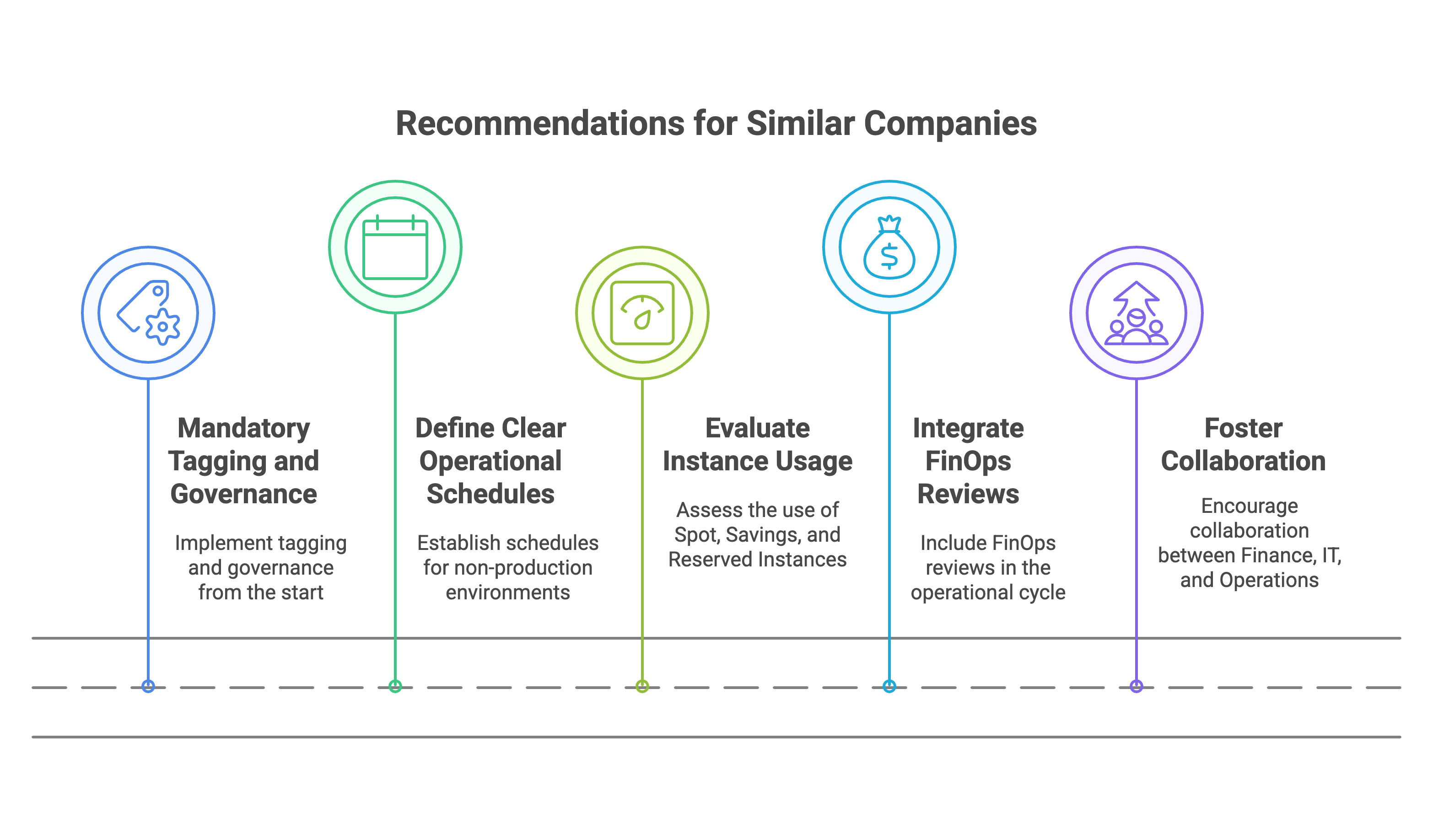
Recommended roadmap for companies facing similar challenges
If your company manages a critical operation on AWS with growing costs, these are our recommendations based on this implementation:
Implementation Roadmap
Implement Tagging and Governance
Establish tagging and governance systems from the start
Weeks 1-2Establish Operating Hours
Define clear hours for non-productive environments
Weeks 3-4Evaluate Instance Options
Evaluate the use of Spot Instances, Savings Plans or Reserved Instances
Weeks 5-8Integrate FinOps Reviews
Incorporate FinOps reviews into the standard operational cycle
ContinuousFoster Collaboration
Promote collaboration between Finance, IT and Operations
Months 2-6Conclusion: FinOps as Competitive Advantage
This case demonstrates that FinOps is not just cost savings—it's intelligent optimization. By combining visibility, governance and continuous improvement, we transformed an uncontrolled AWS bill into an operational competitive advantage.
Key to Success
The application of our K4i methodology to FinOps ensured that each optimization was measurable, reversible and aligned with business objectives. The result: $240K annual savings with improved operations.

